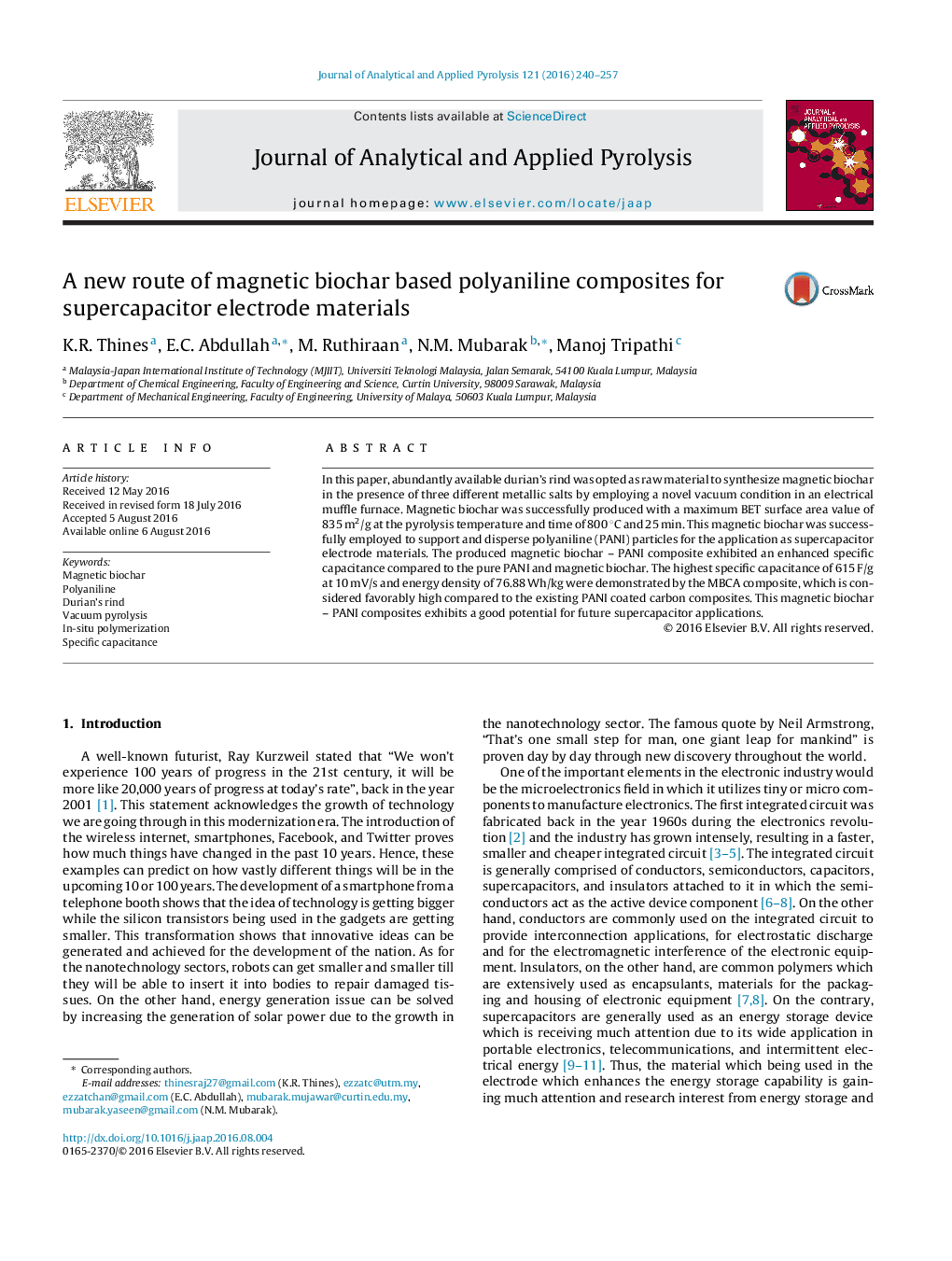| Article ID | Journal | Published Year | Pages | File Type |
|---|---|---|---|---|
| 5134726 | Journal of Analytical and Applied Pyrolysis | 2016 | 18 Pages |
â¢Magnetic biochar (MB) was successfully produced by employing durian's rind as the raw material.â¢The vacuum condition in an electrical muffle furnace during the pyrolysis was described.â¢In-situ polymerization process was carried out to generate the novel MB - polyaniline (PANI) composite.â¢The MB demonstrated a high surface area value of 835 m2/g.â¢The MB - PANI composite exhibited a highest specific capacitance of 615 F/g at 10 mV/s and energy density of 76.88 Wh/kg.
In this paper, abundantly available durian's rind was opted as raw material to synthesize magnetic biochar in the presence of three different metallic salts by employing a novel vacuum condition in an electrical muffle furnace. Magnetic biochar was successfully produced with a maximum BET surface area value of 835 m2/g at the pyrolysis temperature and time of 800 °C and 25 min. This magnetic biochar was successfully employed to support and disperse polyaniline (PANI) particles for the application as supercapacitor electrode materials. The produced magnetic biochar - PANI composite exhibited an enhanced specific capacitance compared to the pure PANI and magnetic biochar. The highest specific capacitance of 615 F/g at 10 mV/s and energy density of 76.88 Wh/kg were demonstrated by the MBCA composite, which is considered favorably high compared to the existing PANI coated carbon composites. This magnetic biochar - PANI composites exhibits a good potential for future supercapacitor applications.
